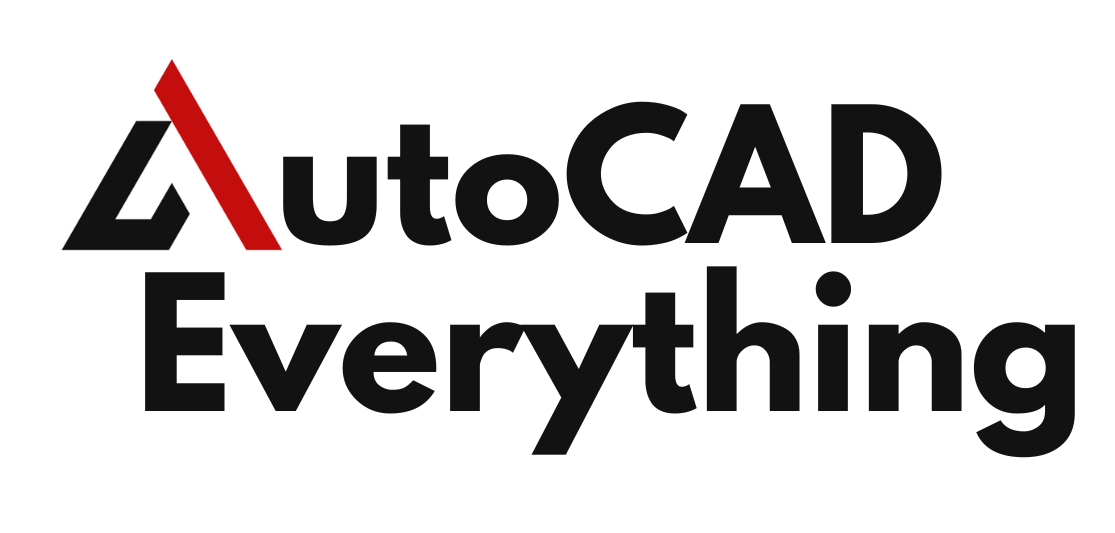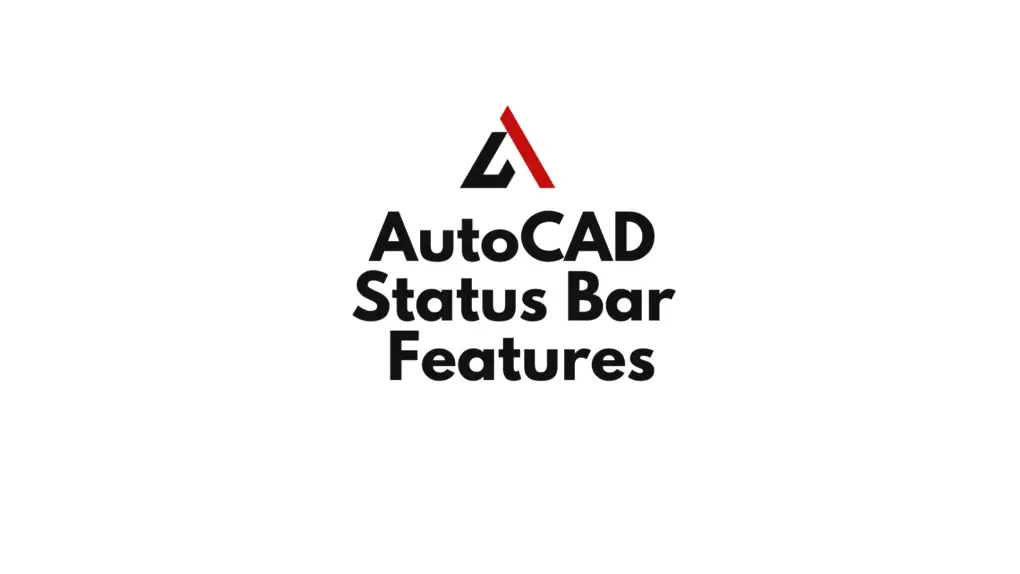Introduction
The status bar in AutoCAD is a vital component of the user interface, providing quick access to various settings and tools that can significantly enhance your drafting efficiency. Located at the bottom of the AutoCAD window, the status bar includes a series of toggles and indicators that control drawing aids, modes, and information displays. Understanding and utilizing these features can streamline your workflow, reduce errors, and improve precision in your designs. This article provides an in-depth explanation of the features and options available in the AutoCAD status bar.
Table of Contents
Overview of the AutoCAD Status Bar
The status bar is designed to give users immediate access to commonly used functions without navigating through menus or the Ribbon. It contains icons and text indicators that can be toggled on or off, providing control over various drafting settings. Hovering over each icon typically reveals a tooltip with a brief description of its function.

Key Features and Options in the Status Bar
- Grid Display (F7)
- Description: Toggles the display of a grid in the drawing area, which serves as a visual aid for aligning objects.
- Usage: Click the Grid Display icon or press F7 to turn the grid on or off. The grid does not affect printing and is purely a visual reference.
- Snap Mode (F9)
- Description: Restricts cursor movement to specified intervals, allowing for precise placement of objects.
- Usage: Toggle Snap Mode by clicking its icon or pressing F9. Configure snap intervals by right-clicking the icon and selecting “Settings.”
- Ortho Mode (F8)
- Description: Constrains cursor movement to horizontal and vertical directions, facilitating the drawing of straight lines.
- Usage: Activate Ortho Mode by clicking the icon or pressing F8. This is particularly useful for architectural and engineering drawings requiring right angles.
- Polar Tracking (F10)
- Description: Guides cursor movement along specified angles, providing angular tracking lines.
- Usage: Enable Polar Tracking by clicking the icon or pressing F10. Customize angles by right-clicking the icon and selecting “Settings.”
- Object Snap (OSNAP) (F3)
- Description: Allows the cursor to snap to precise points on objects, such as endpoints, midpoints, and centers.
- Usage: Toggle Object Snap by clicking the icon or pressing F3. Configure snap points by right-clicking and choosing “Settings.”
- Object Snap Tracking (F11)
- Description: Facilitates the alignment of objects based on existing snap points without creating construction lines.
- Usage: Activate by clicking the icon or pressing F11. Combines with Object Snap to enhance precision.
- Dynamic Input (F12)
- Description: Displays command prompts and input fields near the cursor, reducing the need to look at the Command Line.
- Usage: Toggle Dynamic Input by clicking the icon or pressing F12. Adjust settings by right-clicking and selecting “Dynamic Input Settings.”
- Show/Hide Lineweight
- Description: Controls the display of lineweights (thickness) of objects in the drawing area.
- Usage: Click the icon to show or hide lineweights. This feature does not affect printing unless configured to do so.
- Annotation Scale
- Description: Sets the scale for annotative objects, ensuring that annotations like text and dimensions appear at the correct size when printed.
- Usage: Click the scale indicator to select or create a new annotation scale.
- Model/Paper Space Toggle
- Description: Switches between Model Space, where the drawing is created, and Paper Space (layouts), where drawings are prepared for printing.
- Usage: Click the “Model” or “Layout” tabs to switch. The status bar indicates the current space.
- Coordinates Display
- Description: Shows the real-time X, Y, and Z coordinates of the cursor position in the drawing area.
- Usage: View coordinates in the bottom left of the status bar. Click to toggle the display format between static and dynamic.
- Isometric Drafting
- Description: Enables isometric drafting modes (Top, Right, Left), facilitating the creation of isometric drawings.
- Usage: Click the icon to cycle through isometric planes. Useful for creating 3D-like drawings in 2D space.
- Selection Cycling
- Description: Helps select overlapping or closely spaced objects by presenting a list of possible selections.
- Usage: Enable by clicking the icon. When multiple objects are near the cursor, a list appears for selection.
- Quick Properties
- Description: Displays a brief set of properties for selected objects near the cursor.
- Usage: Toggle by clicking the icon. Customize properties displayed by right-clicking and selecting “Settings.”
- Selection Filtering
- Description: Allows for the selection of objects based on specific criteria, such as object type or layer.
- Usage: Accessed through the “Selection Filter” icon. Useful for editing specific sets of objects.
- Transparency Display
- Description: Controls the display of object transparency in the drawing area.
- Usage: Click to toggle. Transparency settings can be adjusted in object properties.
- Infer Constraints
- Description: Automatically applies geometric constraints to objects as they are drawn.
- Usage: Enable by clicking the icon. Enhances drawing accuracy by maintaining relationships between objects.
- 3D Object Snap
- Description: Similar to Object Snap but for 3D models, allowing snapping to points in 3D space.
- Usage: Toggle by clicking the icon. Configure snap settings by right-clicking.
- Customization Menu
- Description: Provides access to additional status bar tools and options.
- Usage: Click the down arrow at the far right of the status bar to customize which icons are displayed.
Optimizing Workflow with the Status Bar
- Customize Visibility: Not all status bar features are necessary for every user. Use the customization menu to show only the tools relevant to your workflow, reducing clutter.
- Keyboard Shortcuts: Familiarize yourself with function key shortcuts (e.g., F3 for OSNAP) to toggle features quickly without using the mouse.
- Combine Features: Utilize features in tandem, such as Object Snap and Polar Tracking, to enhance precision and speed in drafting.
Suggested Read- AutoCAD Toolbars and Menus
Conclusion
The AutoCAD status bar is more than just a passive display; it’s an interactive hub for controlling crucial aspects of your drafting environment. By understanding the features and options available, you can tailor your workspace to your specific needs, leading to increased efficiency and accuracy in your designs. Regularly exploring and adjusting these settings can help you stay adept with AutoCAD’s evolving capabilities.
FAQs
- How do I customize which icons appear on the status bar?
Click the customization menu (down arrow) at the far right of the status bar. Check or uncheck options to show or hide specific icons. - Can I change the function key assignments for status bar features?
Yes, you can customize keyboard shortcuts through the CUI (Customize User Interface) editor. TypeCUIin the Command Line to access it. - What is the difference between Ortho Mode and Polar Tracking?
Ortho Mode restricts cursor movement strictly to horizontal and vertical directions, while Polar Tracking allows movement along specified angles, providing more flexibility. - How does Object Snap Tracking differ from Object Snap?
Object Snap provides precise points on objects for snapping. Object Snap Tracking uses these snap points to guide cursor movement, helping with alignment without creating additional geometry. - Is the grid visible when printing or plotting?
No, the grid is a visual aid for drafting and does not appear in printed or plotted outputs

